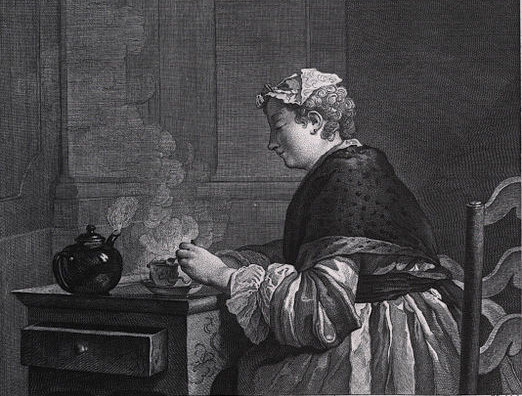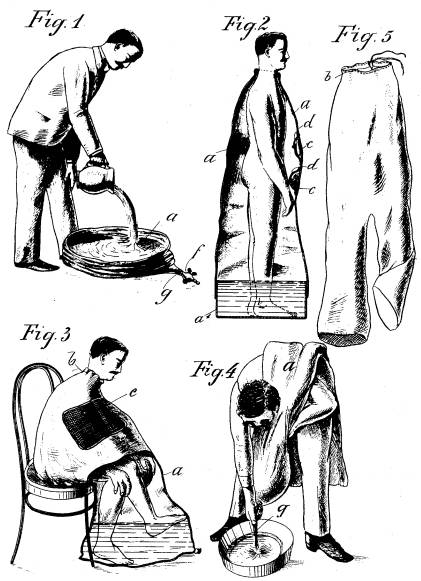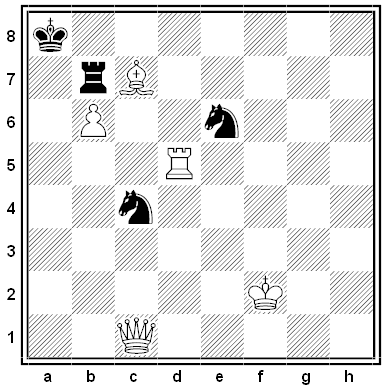Author: Greg Ross
The Froggy Problem
Speaking of Lewis Carroll — and further to Wednesday’s logic exercise — here’s the king of all Carroll’s logic problems. What’s the strongest conclusion that can be drawn from these premises?
- When the day is fine, I tell Froggy “You’re quite the dandy, old chap!”
- Whenever I let Froggy forget that 10 pounds he owes me, and he begins to strut about like a peacock, his mother declares “He shall not go out a-wooing!”
- Now that Froggy’s hair is out of curl, he has put away his gorgeous waistcoat.
- Whenever I go out on the roof to enjoy a quiet cigar, I’m sure to discover that my purse is empty.
- When my tailor calls with his little bill, and I remind Froggy of that 10 pounds he owes me, he does not grin like a hyena.
- When it is very hot, the thermometer is high.
- When the day is fine, and I’m not in the humor for a cigar, and Froggy is grinning like a hyena, I never venture to hint that he’s quite the dandy.
- When my tailor calls with his little bill and finds me with an empty pocket, I remind Froggy of that 10 pounds he owes me.
- My railway shares are going up like anything!
- When my purse is empty, and when, noticing that Froggy has got his gorgeous waistcoat on, I venture to remind him of that 10 pounds he owes me, things are apt to get rather warm.
- Now that it looks like rain, and Froggy is grinning like a hyena, I can do without my cigar.
- When the thermometer is high, you need not trouble yourself to take an umbrella.
- When Froggy has his gorgeous waistcoat on, but is not strutting about like a peacock, I betake myself to a quiet cigar.
- When I tell Froggy that he’s quite a dandy, he grins like a hyena.
- When my purse is tolerably full, and Froggy’s hair is one mass of curls, and when he is not strutting about like a peacock, I go out on the roof.
- When my railways shares are going up, and when it’s chilly and looks like rain, I have a quiet cigar.
- When Froggy’s mother lets him go a-wooing, he seems nearly mad with joy, and puts on a waistcoat that is gorgeous beyond words.
- When it is going to rain, and I am having a quiet cigar, and Froggy is not intending to go a-wooing, you had better take an umbrella.
- When my railway shares are going up, and Froggy seems nearly mad with joy, that is the time my tailor always chooses for calling with his little bill.
- When the day is cool and the thermometer low, and I say nothing to Froggy about his being quite the dandy, and there’s not the ghost of a grin on his face, I haven’t the heart for my cigar!
Unfortunately, Carroll died before he was able to publish the solution — but he warned that it contains “a beautiful ‘trap.'”
Author!
How do I know that I’m not just a fictional character in some imagined story? What could I learn about myself that would prove that I’m real? “I am human, male, brunette, etc., but none of that helps,” writes UCLA philosopher Terence Parsons. “I see people, talk to them, etc., but so did Sherlock Holmes.”
Descartes would say that the very fact that I’m thinking about this shows that I exist: cogito ergo sum. But a fictional character could make the same argument. “Hamlet did think a great many things,” writes Jaakko Hintikka. “Does it follow that he existed?” Robert Nozick adds, “Could not any proof be written into a work of fiction and be presented by one of the characters, perhaps one named ‘Descartes’?”
Tweedledee tells Alice that she’s only a figment of the Red King’s dream. “If that there King was to wake,” adds Tweedledum, “you’d go out — bang! — just like a candle!”
Alice says, “Hush! You’ll be waking him, I’m afraid, if you make so much noise.”
“Well, it’s no use YOUR talking about waking him,” replies Tweedledum, “when you’re only one of the things in his dream. You know very well you’re not real.”
“It seems to me that this is a philosophical problem that deserves to be treated seriously on a par with issues like the reality of the external world and the existence of other minds,” Parsons writes. “I don’t know how to solve it.”
(Terence Parsons, Nonexistent Objects, 1980; Charles Crittenden, Unreality, 1991; Robert Nozick, “Fiction,” Ploughshares 6:3 [1980], 74-78; Jaakko Hintikka, “Cogito, Ergo Sum: Inference or Performance?”, Philosophical Review 71:1 [January 1962], 3-32.)
In a Word

theic
n. one addicted to immoderate tea-drinking
Scattered Objects

If a flock of birds disperses gradually, at what point does it cease to be a flock?
“There is at the moment a pipe on my desk,” wrote MIT philosopher Richard Cartwright in 1987. “Its stem has been removed, but it remains a pipe for all that; otherwise no pipe could survive a thorough cleaning.”
But he also owned a two-volume set of John McTaggart’s The Nature of Existence, one volume of which was in Cambridge and the other in Boston. Do those two volumes still make one thing? If so, is there a “thing” composed of the Eiffel Tower and the Old North Church? Why not?
(From Cartwright’s Philosophical Essays.)
Made to Order
1. Find an expression for the number 1 that uses each of the digits 0-9 once.
2. Do the same for the number 100.
3. Write 31 using only the digit 3 five times.
4. Express 11 with three 2s.
5. Express 10 with two 2s.
6. Express 1 with three 8s.
7. Express 5 with two 2s.
Inside Job

Viennese inventor Adolf Herz patented this “portable bath or sack for washing or bathing purposes” in 1904. Fill it with “bathing agent or fluid,” step in, and close the upper end around your neck, and draw your soap, sponge, and towel from pockets in the interior.
Bathing or washing can be effected in the sack with every convenience. Splashing of water and wetting of the floor is thus entirely prevented. Also by means of the sack the evaporation of the water on the body otherwise taking place in bathing and washing is prevented, whereby the catching of colds is avoided. The bathing and washing can therefore be done in cool places. Also radiation of the heat of the body is considerably reduced, whereby a very agreeable sensation is produced when using the sack.
Afterward you can drain it through a runoff pipe. “After the sack has been emptied it can be folded together, so as to occupy a very small space, and then, if desired, tied or fastened together and kept in a bag, satchel, knapsack, or the like.”
The Bat Bomb

Pennsylvania dentist Lytle S. Adams had a bright idea in 1942: Since Japanese cities were largely built of paper, bamboo, and other flammable materials, they could be disrupted effectively with fire. And a novel way to spread fire in public buildings would be to release bats bearing incendiary devices. Rigged bats dropped over an industrial city would roost in the buildings as living time bombs, and the resulting fires would spread chaos over a wide area.
Surprisingly, the government liked the idea, and it set about designing a bomblike canister in which a thousand bats could be dropped from an altitude of 5,000 feet. At 1,000 feet the container would open, releasing the bats over a wide area. Ten bombers carrying 100 canisters each could unleash a million intelligent bombs over the industrial cities of Osaka Bay.
Preliminary tests were encouraging, even setting a New Mexico air base accidentally ablaze, but the project evolved too slowly and was eventually eclipsed by the atom bomb. In a way that’s a shame: “Think of thousands of fires breaking out simultaneously over a circle of 40 miles in diameter for every bomb dropped,” Adams had said. “Japan could have been devastated, yet with small loss of life.”
Animal Behavior
A logic exercise by Lewis Carroll. What conclusion can be drawn from these premises?
- Animals are always mortally offended if I fail to notice them.
- The only animals that belong to me are in that field.
- No animal can guess a conundrum unless it has been properly trained in a Board-School.
- None of the animals in that field are badgers.
- When an animal is mortally offended, it rushes about wildly and howls.
- I never notice any animal unless it belongs to me.
- No animal that has been properly trained in a Board-School ever rushes about wildly and howls.
Disappearing Act
Some amoebae, to be sure, do die. Sometimes an amoeba cannot get sufficient food or oxygen or moisture to sustain its life, and that kills it. But some amoebae do not get an opportunity to die … let us consider a well-fed, healthy amoeba alone in a drop of well-oxygenated pond water. I shall call it ‘Alvin.’ Alvin, let us suppose, lives happily through Tuesday and then, precisely at the stroke of midnight, Alvin divides, producing two offspring whom I shall call ‘Amos’ and ‘Ambrose.’ On Wednesday, we find two amoebae — Amos and Ambrose — swimming happily about in our drop of pond water. But what has become of Alvin? One thing is quite clear: Alvin is not an inhabitant of our drop of pond water on Wednesday. … His life, therefore, must have come to an end. But it is equally clear that Alvin did not die.
— Jay F. Rosenberg, Thinking Clearly About Death, 1983

